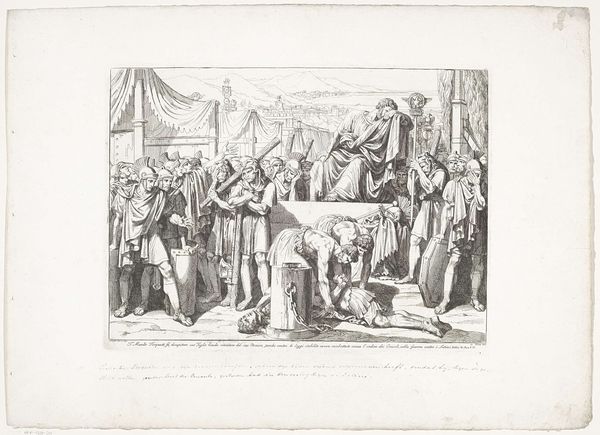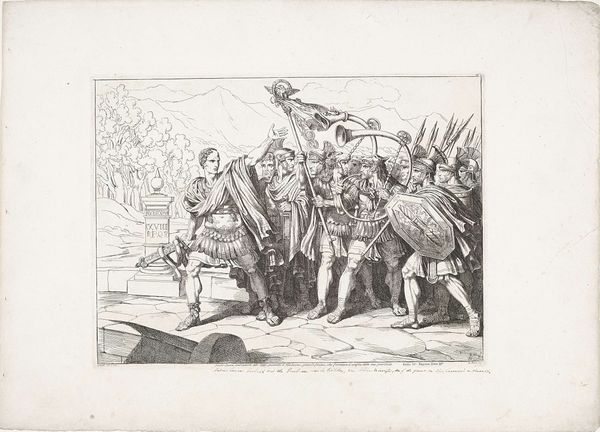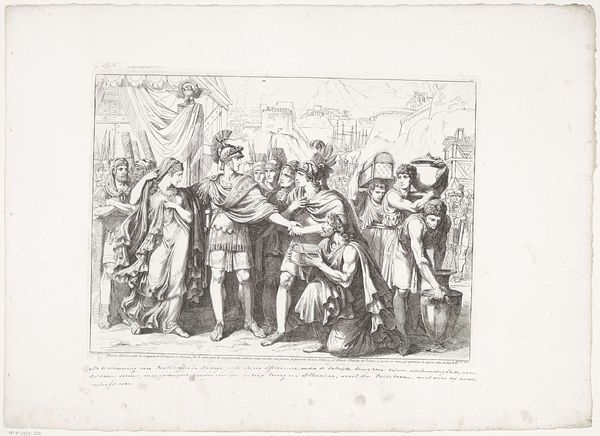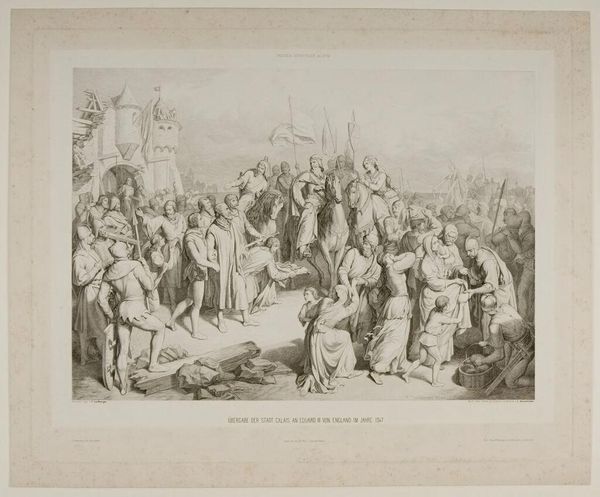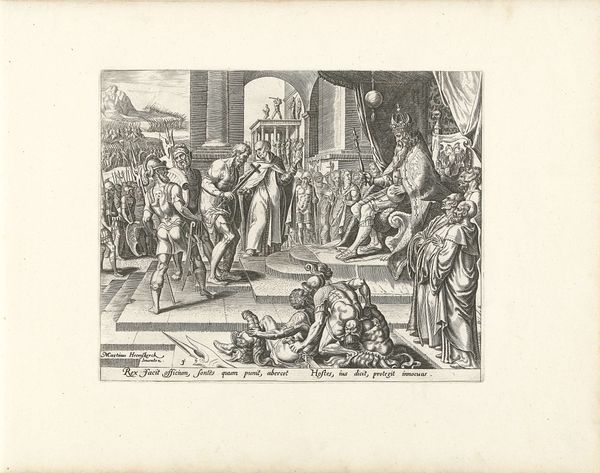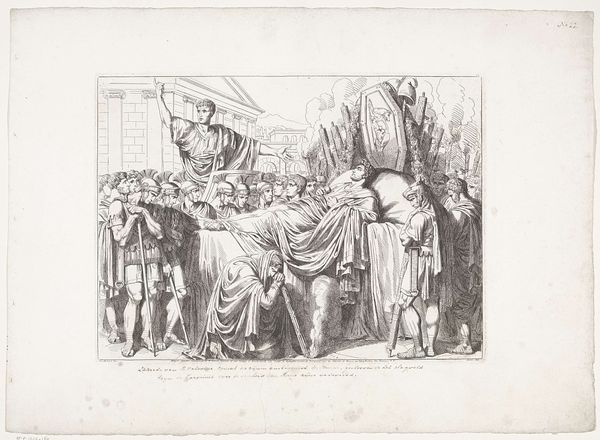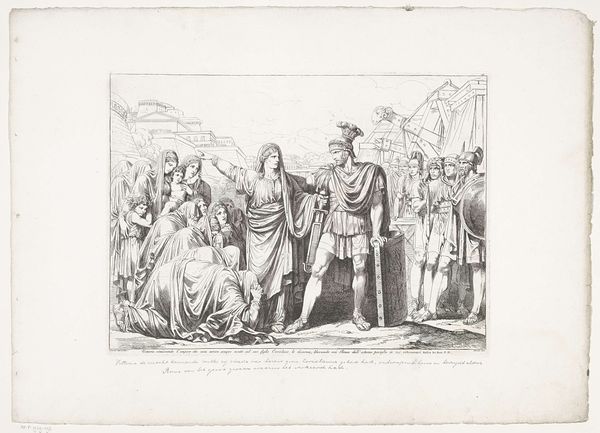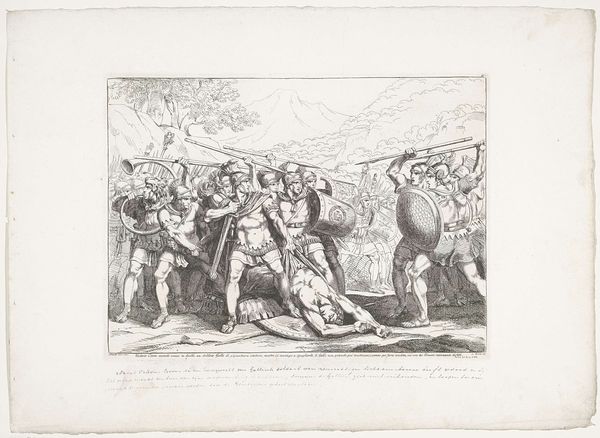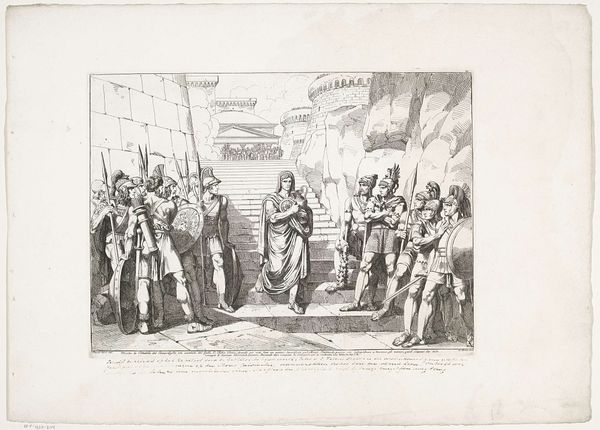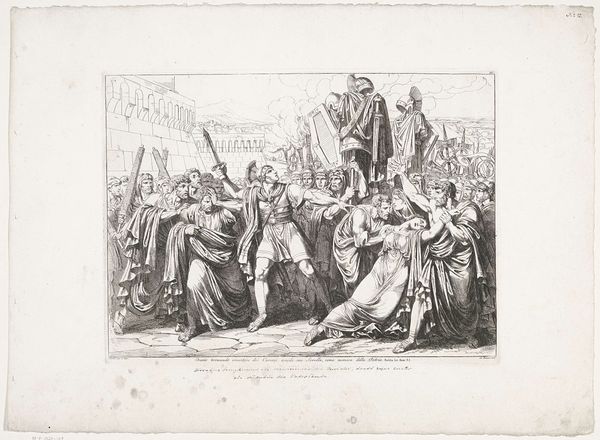
print, engraving
#
neoclacissism
#
narrative-art
# print
#
classical-realism
#
figuration
#
ancient-mediterranean
#
history-painting
#
engraving
Dimensions: height 315 mm, width 426 mm
Copyright: Rijks Museum: Open Domain
Editor: This is Bartolomeo Pinelli's 1817 engraving, "Caius Mucius Scaevola verbrandt zijn rechterhand." It feels so theatrical, almost like a stage play frozen in time. What kind of story is it telling? Curator: It depicts a moment of extreme self-sacrifice and defiant resistance from Roman history. Caius Mucius Scaevola, having failed to assassinate the Etruscan king Lars Porsena, demonstrates his courage by thrusting his right hand into a fire, as the print indicates. Think about the power dynamics at play. Why might Pinelli, during the rise of nationalism in the 19th century, choose to depict this story? Editor: So, it's about patriotism, then, about loyalty in the face of defeat. But why focus on such a gruesome act? Curator: The burning hand is not simply about physical pain. It’s a radical statement. This act needs to be analyzed in relation to themes of masculine stoicism, Roman identity, and the subjugation of the body for political ends. The male body becomes a battleground for the ideals of the state, and in a time of political volatility, where were Italian artists drawing from when it comes to envisioning their history? What specific details might tell us how to better read this work within those intersectional narratives? Editor: I see. The setting is staged carefully, like the architectural background gives it a historic feel. How does the style connect to these ideas? Curator: Yes! It aligns with Neoclassicism's focus on civic virtue and moral example drawn from antiquity. In other words, the artist may want us to admire this "manly" submission, this performance of patriotism, or maybe the intention is different depending on where you see yourself. It provokes discussions around performative sacrifice and masculine ideals as cornerstones of power structures. Are there more ways the piece "performs" than simply showing Scaevola’s gesture of supposed loyalty? Editor: That reframes the whole image. Now, it is less about blind patriotism and more of a call to inspect our heroes more critically, to consider these underlying assumptions that build up systems of power. Curator: Exactly! Looking at the socio-political framework transforms the art viewing into dialogue on historical representation and how it intertwines with contemporary critical questions.
Comments
No comments
Be the first to comment and join the conversation on the ultimate creative platform.
